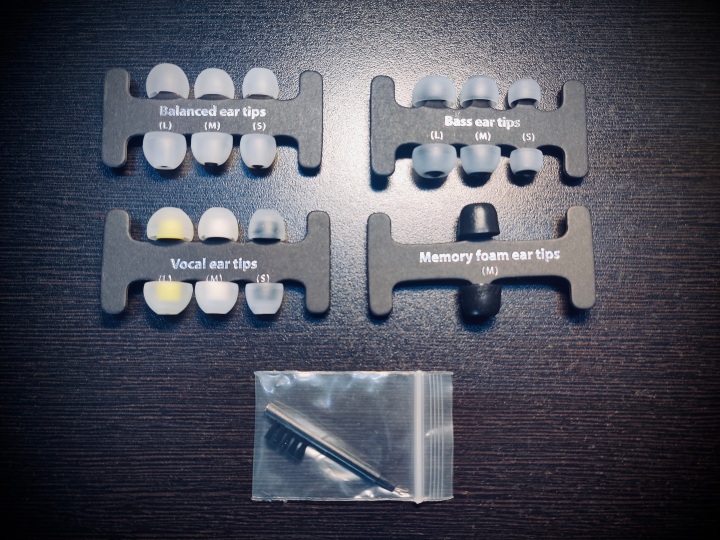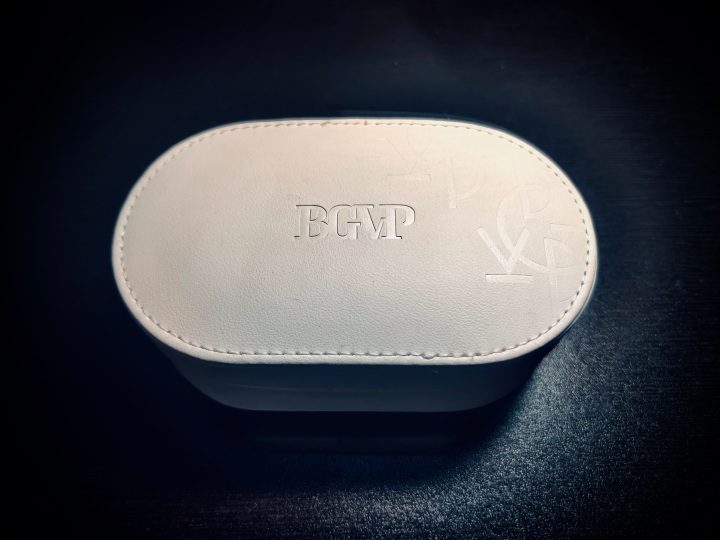About BGVP.
BGVP is based out of Dongguan, China. They manufacture and sell a wide range of products like in-ear monitors, earbuds, cables, cases, etc. They initially came into prominence with successful products like DMG and DM6. Since then they’ve launched a wide range of products with us having reviewed their EST hybrids EST12 and EST8, ArtMagic V12, DM7, DM8, ArtMagic VG4, ArtMagic DH3, NE5 and Melody here on our website.
Official Store – BGVP DM9 ($629)

Technical Specifications.
- Drivers – 1DD + 4BA + 4EST
- Impedance: 30Ω
- Sensitivity: ≥110dB SPL/mW
- Frequency : 10Hz-40kHz
- Distortion: <0.5%
- Channel Matching: ±1dB
- Rated Power: 179mW
- Cavity Material: Stable Wood
- Cable: 4 core OCC silver-plated graphene mixed cable with swappable 2.5mm, 4.4mm and 3.5mm jacks.
Included in the box.
- BGVP DM9
- MMCX cable with swappable 2.5mm, 3.5mm & 4.4mm jacks
- Silicone ear tips (1 Pink bore, SML Vocal, SML Balanced & SML Bass)
- Memory Foam ear tips – 1 pair
- Carry case
- Cleaning tool
- Warranty card

Build quality.
DM9 has dyed wood shells with 2 colour options – Purple and Green. The finishing on the DM9 is significantly better than the DM8. It looks more premium, something that can compete in a league or two above its price segment in terms of build quality. High-end manufacturers like Noble Audio and JH Audio offer stable wood shells but the thing is that most of Noble’s Prestige series of IEMs are above $2000 and JH Audio’s wood shells come as a custom options with a substantial premium as well. Sure, Noble and JH’s overall construction and finishing are really good but DM9’s shells look much more premium for their sub-$500 pricing. One hardly comes across such stable wood shells under $1000. The wood shells are carved by 5-axis CNC machines and are dyed to highlight the wood grain, figuring and colours. It is then lacquered with clear coats and polished for high shine. DM9 has MMCX sockets, BGVP logo on the faceplate, a vent on top and 4 sound bores. The shells overall are quite small in size considering it is a tri-brid and houses 9 drivers (1DD + 4BA + 4EST). Quite a feat I must say.

Cable – DM9’s stock cable is a 4 core OCC silver-plated graphene mixed cable with swappable 2.5mm, 3.5mm and 4.4mm jacks. The jack, MMCX connectors and y-split are all made of metal and are high quality. It’s a nice premium cable which is very supple with minimal downward pull and I much prefer it over the DM8’s stock cable. The swappable jacks are so convenient and I’m so happy to see BGVP trying to offer cables with swappable jacks with most of their IEMs, even their cheaper sub-$200 IEMs.

Case – Very roomy case that easily fits the IEM and cable and a nice long netted pouch inside that fits all the nozzle filters and swappable jack terminations.

Fit, Comfort and Isolation.
DM9’s shells are so small that I’m intrigued to see how they’ve managed to fit 9 drivers, especially the DD and 4ESTs with their transformer inside such a small shell. They have a semi-custom shell shape and are an extremely snug and comfortable fit for my ears. You can further tweak the snugness and fit to your preferences using the different stock ear tips. Even though it has a vent on top for the DD, noise isolation is particularly impressive.

Sound Analysis.

Graphs are measured using an IEC60318-4 (IEC711) setup. You can compare all the graphs on my IEM Graph Database here – Animagus Squiglink.
Summary – DM9 has a bright leaning W-shaped signature that goes for a vibrant and vivid presentation of music with high levels of resolution and detail retrieval. It has about 5dB of bass shelf, emphasis in the 125-250Hz region of mid-bass, slightly leaner lower-midrange presentation, a forward upper-midrange of about 9dB ear gain with sparkly and airy treble that adds some good energy and vibrancy to make for a more exciting, energetic and micro-detailed listen that demands you attention. BGVP has included a lot of ear tips in the package for one to not only customise fit but also the sound as per one’s liking. I quite liked DM9 with the stock A07, Foam tips, Bass tips as well as 3rd party tips like Softears Foam tips, Symbio W and Azla Sedna Short. I highly recommend tip rolling as DM9 takes a multitude of tips well and you really can fine tune DM9’s sound nicely as per your preferences.
Let’s dig in deeper…
Bass – DM9’s overall signature tills towards treble but when it comes to bass, it performs as per the song. It comes off more on the neutral side but still has a nice boost to balance out the EST treble. It has a micro-detailed approach to bass but with DD tonality and timbre to support. It has quick and detailed transient presentation without coming across dry or lifeless like some old generation bass BAs can come across. Listening to Dua Lipa’s bass driven ‘Future Nostalgia’ album, the stringed instruments and cymbals are definitely highlighted but bass occupies good space in the centre, always in control and never overpowers the song. If the bass is mixed a bit louder like in the track ‘Pretty Please’, it shows it so and if the bass performance is more in the pocket like the song ‘Don’t Start Now’, that’s exactly how it sounds with the DM9.
Midrange – DM9 has a slightly coloured midrange presentation. The boosted mid-bass region does add some warmth and instrument body to an otherwise sparkly signature but then the slight dip around 600Hz adds some leanness to the signature. So, instruments with more body emphasis in the mid-bass region get some extra weight and others with prominent presence in the 400-700Hz region, a slight scoop. I personally like my lower-midrange region from 250-1kHz to be absolutely flat/neutral, so I’m not the biggest fan when there are boosts or cuts in the region. Luckily DM9 doesn’t stray too far; the cut is perceivable but extremely minor. It has a forward upper-midrange presentation with twin peaks at 2.5kHz and 5kHz than a natural, single ear gain peak at 3kHz. It’s mainly the primary peak shifting to 2.5kHz than being at 3kHz. The slight elevation around 5kHz above neutral adds to instrument attack, particularly percussion stick attack, which is one of the reasons for DM9’s added sense of detail retrieval. The transients sound sharper and stronger than usual, which adds on to the vibrant and energetic presentation. Overall, DM9’s midrange presentation leads to very slightly different tonality and timbre than reference; it doesn’t sound perfectly accurate to an audio engineer/reference head like me but doesn’t take it too far either and is within the confinements of fair accuracy.
Treble – Treble here is a double edged sword. On one hand it is the highlight and MVP in DM9’s tuning but on the other hand, can also come off slightly brighter, sparklier and sizzlier than comfortable for the treble sensitive, especially with the wrong ear tips. It has north of neutral boosts in lower-treble and mid-treble while the air region is fairly neutral. I’d recommend trying the foam tips for the most balanced tonality if you’re treble sensitive. If you’re a treble-head and a sucker for details, it shouldn’t be a problem at all. DM9’s kind of presentation not only enables very good micro-detail retrieval but also makes for an energetic and exciting listen, presenting the music in a more vivid and vibrant way.
Technical Performance – DM9 is a micro-detailed IEM because of its bright leaning tuning as well as choice of drivers as a tri-brid. It has very good detail retrieval, layering and imaging. It has a clean, open and airy soundstage with good left to right separation for its price. The boundaries are fairly wide and deep but more in line with sub-$1000 price segment than giving the post kilobuck stalwarts a run for their money.


